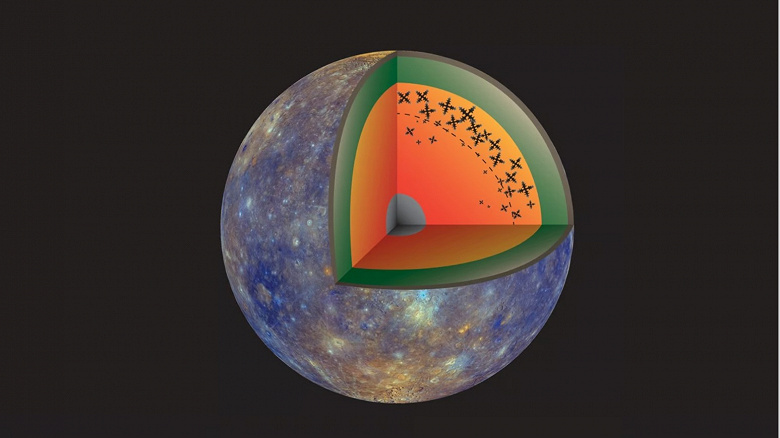The “dancing” magnetic field and its connection with the formation of “iron snow” on Ganymede
Tidal effects caused by Jupiter on Ganymede constantly affect this moon, stretching and compressing it. This keeps its core warm and creates a magnetic field. However, the processes occurring inside the nucleus are not fully understood. A new study tested one of the leading models of core dynamics – formation of «iron snow».
The theory of «iron snow» is a kind of «weather model» kernels. It explains how iron cools and crystallizes at the top of the core, where it contacts the mantle, and then sinks in and melts again in the liquid center of the core.
Thus, Ganymede's core can be thought of as a swaying “snow globe” that is constantly being shaken and mixed by Jupiter's gravity. This cycle creates movement in the liquid core and provides the energy to generate a magnetic field. However, some key aspects of this process remain a mystery.
The researchers designed an experiment to test some aspects of the model. Since it is impossible to directly probe Ganymede's core, the team used water ice as an analogue for «iron snow crystals».
The experiment took place in a special tank with water, which was cooled from below. At the bottom of the reservoir there was a salt layer, which was the mantle. This helped prevent ice crystals from sticking to the bottom. Above this layer was a layer of fresh water, which represented the liquid core. Ice crystals formed at the bottom of the tank, mixing with salt and fresh water, then rose up and melted into the warmer liquid above.
Thus, the experiment was a kind of simulation of «iron snow», where snowflakes moved up, not down.
This experiment allowed the team to study the behavior of the crystals and their impact on the entire system. However, the results obtained were unexpected. Instead of a stable process of crystallization, rise and melting, there were irregular bouts of rapid activity followed by periods of inactivity.
It turned out that for the crystallization process to begin, the liquid must be in a supercooled state, when the temperature is below the freezing point of ice. Only in this case does the formation of crystals occur, and then there is a pause until the temperature becomes low enough for the formation of new crystals.
This irregular and cyclical process affects the magnetic fields of Ganymede. Crystals «iron snow» on Ganymede they are formed heterogeneously and localized in different parts of the core. As a result, a magnetic field moves and changes its shape.
This phenomenon is present not only on Ganymede, but also on other small bodies of the Solar System, such as the Moon, Mercury, Mars and large metal asteroids.
It is believed that the formation of “iron snow” most likely does not occur in the Earth’s core. The powerful gravitational pressure at the heart of our planet, as well as a different composition, causes the metals in the center of the core to solidify and then melt as they move.

